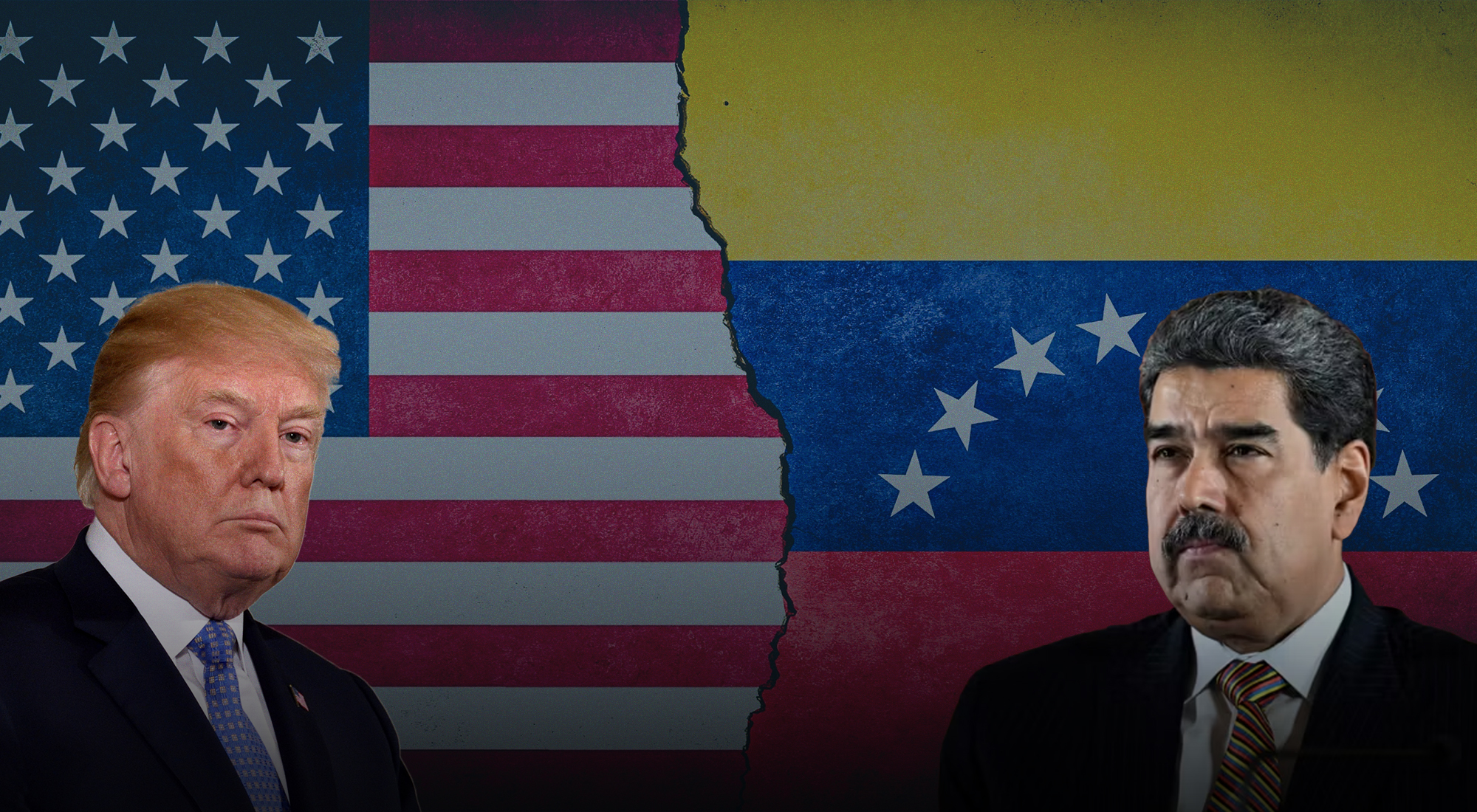Since the beginning of Russia’s war in Ukraine, we have heard of sanctions against Russia daily, but we have not heard much about what Russia is doing in response to these sanctions. We have heard about Russia’s attempts to replace the European energy market with Eastern ones for its energy exports. We have also heard of Russia’s threats to cut gas supplies to Europe during the upcoming winter. However, the Kremlin’s attempts to neutralize Western sanctions go beyond simple market-hunting and energy threats. In fact, since the annexation of Crimea in 2014 – when Moscow, for the first time in the post-Soviet era, faced a heavy wave of sanctions – Russia has been aiming to create a sophisticated financial and monetary defense mechanism to counter Western sanctions. The goal of this mechanism is to establish a financial system parallel to the Western-dominated one, through which Russia can keep its financial telecommunications and payment transaction systems independent from Western systems such as SWIFT, Visa, and Mastercard.
To realize the above agenda, Russia has been developing a financial defense mechanism that has two prominent wings: a financial telecommunication network and a payment transaction system. This paper will analyze the alternative systems Russia has been attempting to establish and how successful they have been so far.
Financial telecommunications
The primary monetary battleground between Russia and the West is in the area of financial telecommunication networks, which facilitate payment transactions between banks and financial institutions worldwide. These networks deliver notifications/messages which contain payment instructions between the banks involved in the transaction.
Among all of these networks, the Society for Worldwide Interbank Financial Telecommunication (SWIFT) is the most extensively used interbank financial messaging system internationally, which allows banks and financial institutions to send and receive financial information.[1] Simply put, SWIFT performs the function of financial telecommunications not only with banks but with the entire global monetary/exchange system, for which a fee is charged for each transaction.[2]
SWIFT was established in May 1973, when 239 banks from 15 countries joined a united front to develop formalized methods for exchanging financial information and create an international data network using standardized messages.[3] The member banks chose Belgium (La Ulpe near Brussels) as the host country; subsequently, under Belgian law, they established SWIFT as a joint stock company owned by member banks.[4]
SWIFT operations are based on two fundamental documents: the Charter and the Basic Agreements and Terms. The board of directors is occupied by representatives of banks from Western Europe and the United States. The number of shares is distributed in proportion to “the financial contribution of shareholders for network-based services.”[5] Respectively, the United States, Germany, Switzerland, France, and Great Britain have the largest number of shares.[6] Hence, it is needless to say that SWIFT and its functions depend heavily on the will of Western powers.
Today, SWIFT connects more than 11,000 institutions from over 200 countries.[7] Thanks to SWIFT, all these institutions are able to interact with each other around the clock, 365 days a year, to the extent that in 2021 alone, SWIFT members exchanged an average of 42.3 million messages per day.[8]
Russia’s presence in SWIFT can be traced back to the Soviet era when, in December 1989, Vnesheconombank became the first Soviet financial institution to connect to SWIFT.[9] In 1992, three more banks joined SWIFT in Russia, after which the number of active Russian users began to grow.[10] In order to connect Russia’s banking system to SWIFT, in 1995, the Russian Federation established the Russian National SWIFT Association (ROSSWIFT), which is a non-profit organization that represents the interests of Russian financial institutions and acts on their behalf.[11] The number of Russian financial institutions in the SWIFT system eventually reached 300,[12] making Russia the second largest user of the telecommunications system, next to the United States.[13]
However, in 2014, after its occupation of Crimea, Moscow, for the first time, felt financially vulnerable when Western nations responded to its annexation of Crimea by imposing sanctions on some Russian banks, which led to a drop in the value of the Russian ruble against the US dollar. Moscow’s concerns peaked when the United Kingdom proposed a plan to cut Russians from SWIFT.[14]
Although the UK proposal fell through,[15] the nature of the plan alerted Moscow to the reality that the West’s monopoly over SWIFT could easily trigger a massive economic crisis in Russia. Therefore, to counter the West’s economic warfare, Russia created its own Financial Message Transmission System (SPFS), which also allowed banks to exchange financial data on Russian transactions.[16] By mid-2018, more than 400 domestic banks had joined the SPFS, which is more than the number of Russian credit institutions in the SWIFT system.[17]
Despite SPFS’s success in establishing an independent domestic telecommunications network among Russian banks, the organization has not been able to replace SWIFT’s role in international correspondence between Russian banks and foreign banks since most major international banks have refused to join the SPFS, fearing Western sanctions. Additionally, the majority of major banks are West-based, hence it is not in their interests to undermine the SWIFT monopoly by joining other systems, particularly those banks in countries that are shareholders of SWIFT. Thus, Russia’s foreign trade remained vulnerable to sanctions. Evidently, when Russia attacked Ukraine again in February 2022, Russian business elites were concerned that the West might disconnect Russia from the international financial telecommunication system. As it turned out, their concerns were not baseless since, on 1 March 2020, the major shareholders of SWIFT (US, UK, EU, and Canada) decided to remove seven giant Russian banks – VTB, VEB, Rossia Bank, Sovcom Bank, Bank Otkritie, Novikombank, and Promsvyazbank – from SWIFT.[18]
Although the West has not entirely disabled SWIFT for Russian banks – as many Russian banks still have access to the system, including Sberbank, which is the largest bank in the country[19] – one might argue that the wheels of the West’s economic war machine are in motion, and there is a strong chance that, sooner or later, next to Iran, Russia will be another county banned from SWIFT.
Despite what happens in the future, the fact that seven prominent Russian banks have been removed from SWIFT indicates that the lines of financial communication are narrowing for Russia, which has impacted Russia’s economy in the following ways:
- Russians cannot send and receive funds from abroad, at least not as easily as they used to.
- Russian customers cannot benefit from the international functions of Visa and Mastercard payment cards issued by Russian banks.
- The interruption in Russia’s banks’ access to SWIFT undermines the value of the Russian ruble.
- The restrictions on Russia’s use of SWIFT has posed challenges to the country’s foreign trade.
- The restrictions on Russia’s trade might cause irregularity in the supply chain of imported goods, increasing the total cost of imported items for Russian customers.
To mitigate the impacts of the above challenges, Russia has been trying to expand the SPFS. By April 2021, the Armenian Arshidbank, the Kyrgyz Bank of Asia, and more than 20 Belarusian banks were connected to the system.[20] Subsidiaries of large Russian banks in Germany and Switzerland also have access to the SPFS system.[21] Notwithstanding this, the membership of the mentioned banks would not entirely solve Russia’s problem since none of these countries assume a significant portion of Russia’s foreign trade. Russia’s top trade partners are China, the Netherlands, the United Kingdom, and Germany,[22] but none have been the most welcoming nations to the SPFS.
Payment transaction systems
The area of payment transaction systems is the second major monetary battleground between Russia and the West. This turned into a critical matter for Moscow when on 5 March 2022, Visa and Mastercard suspended their operations in Russia.[23] While both payment systems allowed for the use of their cards within Russian territory until their expiration dates, use of the cards outside the Russian Federation was disabled. This also meant that Russian users would not be able to pay for foreign online services either.[24] Shortly after, Apple Pay and Google Pay also restricted Russians’ access to their platforms.[25]
Despite the successive sanctions, Russia was not entirely unprepared to confront such challenges, as the country had been seeking to establish a parallel system to Western payment services. In 2014, Russia created the National Payment Card System Joint Stock Company (NSPK), which processes all transactions within the country through a domestic Mir card, issued by many Russian and foreign banks represented in Russia. Russian officials claim that the cards comply with all Russian and international security standards.[26] The Mir card is accepted throughout Russia and allows Russians to pay for goods and services, withdraw money from ATM machines, and transfer funds anywhere in the country where bank cards are serviced.[27]
Thus, it is safe to argue that Russia’s domestic payment services and interactions are secure. Russian-issued cards will continue their usual operation in the country, allowing users to pay for goods in Russian stores, carry out transactions at ATMs, and make card-to-card transfers.[28]
In addition to securing internal transactions, Moscow started entertaining the idea of internationalizing the function of the Mir card. In this vein, from the very beginning of the establishment of NSPK, Russia endeavored to attract foreign countries to this service, which led to the recognition of the Mir card as a payment system by banks in Turkey, Vietnam, South Korea, Armenia, Uzbekistan, Belarus, Kyrgyzstan, Tajikistan, and Kazakhstan.[29] Given the restrictions imposed on Russians’ access to Western-issued cards, it was only natural for Russia to try to expand the international presence of its Mir card. In this context, in mid-September, Russia’s Ministry of Finance announced its plan to increase the number of countries that accept its Mir card to 20 countries by 2025 and to 35 countries by 2030.[30]
To vend this agenda, Russia has targeted popular destinations for Russian tourists and travelers, such as the Asia-Pacific region, Latin America, and the Middle East, and in particular nations that have friendly relations with Moscow, including Cuba, Thailand, Egypt, the United Arab Emirates, Myanmar, Venezuela, Iran, Indonesia, Bahrain, China, India, Sri Lanka, Azerbaijan, Cyprus, and Nigeria. According to Russian analysts, these countries would benefit from accepting the Mir card since the blockade of Western payment systems has significantly impacted Russians’ trips abroad, which in turn has had a negative impact on these countries’ revenues from Russian tourists. Thus, by adopting the Russian Mir payment transaction system, these nations can sustain, or even increase, their cash flow from Russian tourists.[31]
However, the expansion of the Mir network should not be interpreted as the emergence of Mir as an international payment system since the Mir card has been facing severe setbacks, including Egypt’s decision to freeze the Mir system to avoid US sanctions.[32]
The US counterattack
It appears that Russia’s sophisticated plan to expand its financial defense mechanism had one major flaw: it did not take into account the range of tools the US can use to counter Russia – a flaw which was exposed in September 2022 when the US Treasury put Vladimir Komlev, Chief Executive Officer of NSPK, on its sanctions list.[33] Although the Treasury Department did not directly target NSPK and the Mir payment system, by sanctioning Komlev, it sent a message to foreign banks and financial institutions that enabling the Russian payment system by participating in or cooperating with it would be a risky action.
The US’s immediate move against NSPK significantly slowed down the Russian Central Bank’s efforts to expand the use of Mir cards internationally. In addition, the White House’s covert declaration of war on the Mir card complicated the situation for countries already connected to the system. For instance, immediately after the US decision to sanction Komlev, TourDom, a prominent Russian travel portal, reported that many Turkish hotels had stopped accepting cards from the Russian payment system. According to Russian sources, Turkish bankers were stating their fear of US sanctions as being instrumental in their decision to abandon the Mir card.[34] Mir card customers also reported difficulties in using their cards outside the country, as many foreign banks refused to accept cards issued by sanctioned Russian banks.[35]
The Chinese factor
Despite the impactful US confrontation with the NSPK, one must keep in mind that we have not witnessed the end of the Russo-Western monetary war or the collapse of the Russians’ financial defense mechanism. It is the author’s view that the future of Russia’s financial defense mechanism is neither in the hands of the Kremlin nor the White House, but it is at the mercy of China.
As previously mentioned, China is Russia’s primary trade partner and with China ramping up its purchases of Russian oil, trade relations have strengthened further.[36] Hence, to offset the impact of Western sanctions, it is vital for Russia to sustain a financial communication line and transaction platform through which Moscow can maintain trade with China. To this end, the Kremlin has been actively trying to bring China into the SPFS community.
In fact, since the early weeks of the Russo-Ukrainian war, the Bank of Russia and the People’s Bank of China have been working to establish a line of financial communication to bypass SWIFT. However, it seems that Beijing is still reluctant to form a united economic front with Russia against the West, given that no Chinese bank other than the Bank of China has joined the SPFS.[37] From what it appears, Chinese officials have shied away from encouraging other institutions to join the SPFS out of fear of Western sanctions.
China’s hesitation in joining the SPFS should not be interpreted as Beijing’s lack of interest in establishing a parallel financial telecommunications network to the Western one. China has been taking advantage of the current monetary standing between Russia and the West to expand its own analog of the SWIFT. In 2015, China founded the Cross-border Interbank Payment System (CIPS), through which banks can make payments in yuan directly.[38] The system provides two advantages to its clients: (1) independency from the SWIFT and (2) less reliance on the USD.[39] Hence, when the CIPS was established, Russian banks and financial institutions facing the threat of Western sanctions over the occupation of Crimea in 2014 found an interest in joining the CIPS.
By 2016, two Russian banks – VTB Bank and FC Otkritie Bank – had joined the CIPS.[40] Since then, 23 Russian banks – including the Credit Bank of Moscow, Asian-Pacific Bank, TransCapitalBank, Solidarity Bank, Ak Bars Bank, Absolut Bank, and Bank Saint Petersburg – have joined system.[41] The pace of Russian institutions joining the CIPS grew further after the outbreak of the recent war with Ukraine, and significant Russian banks such as Rosbank, Gazprombank, and Alfa-Bank are preparing for a complete connection to the CIPS.[42] This is an important development since these monetary units play an essential role in recycling Russia’s revenues from oil exports, specifically Gazprombank, which is also the channel through which China can pay for Russian gas in rubles.[43]
However, though it seems that Russians have joined the CIPS to deal with the damaging impact of Western sanctions, this is likely just a short-term goal and not the ultimate goal. In fact, there is a strong possibility that the ultimate goal is to establish a ‘mega Eastern platform’ by connecting Russia’s SPFS with China’s CIPS. To back this argument, we can refer to the remarks of Anatoly Aksakov, Chairman of the State Duma Committee on Financial Markets, on 16 March 2022, whereby he stated: “The Bank of Russia and the People’s Bank of China are working on connecting the Russian and Chinese systems for transferring financial messages, bypassing the international system for transferring interbank payments SWIFT.”[44]
Aksakov’s statement indicates that Moscow is hoping to create a “SWIFT 2.0” with the help of China to protect its financial well-being from Western sanctions – only time can tell if this ambitious agenda has any chance of success.
Conclusion
In light of all these developments, we can safely conclude that Russia’s financial defense mechanism has not been a grand success but also not a total failure either, as the defense mechanism has achieved a notable degree of success at home by securing domestic payment transactions via the Mir card and domestic monetary communications via the SPFS. Similarly, the NSPK succeeded in defusing the impact of the restricted access to Visa and Mastercards on Russia’s domestic exchanges.
However, when it comes to foreign exchanges, the efficiency of Russia’s defense mechanism is questionable since the issue of foreign communications and transactions remains a pressing concern for Russia, as neither the NSPK/Mir card nor the SPFS have been able ensure the continuation of Russia’s international business without foreign interference.
It seems that to achieve the latter, Russia needs to go beyond its self-made financial defense mechanism and endeavor to form a united financial front with China. This would constitute a complicated process since the United States is both China’s top export market and its primary rival. Only time will tell what the new Chinese leadership will do and which of the two aspects will matter most.
References
[1] Patricia Kowsmann and Ian Talley, “What Is Swift and Why Is It Being Used to Sanction Russia?” The Wall Street Journal, March 1, 2022, http://bitly.ws/y5oE.
[2] Ibid.
[3] Susan V. Scott and Markos Zachariadis, The Society for Worldwide Interbank Financial Telecommunication (SWIFT): Cooperative Governance for Network Innovation, Standards, and Community (London: Routledge, 2013): p. 16.
[4] SWIFT, “Organisation & Governance,” http://bitly.ws/y5pR.
[5] Ibid.
[6] Ibid.
[7] SWIFT, “Swift History,” http://bitly.ws/y5q3.
[8] “SWIFT Transaction Monitoring Best Practices Guide,” Integrated Research (IR), http://bitly.ws/y5qu.
[9] Russian National SWIFT Association, “Russian National SWIFT Association – ROSSWIFT,” https://www.rosswift.ru/en/.
[10] Ibid.
[11] Russian National SWIFT Association, “About ROSSWIFT,” http://bitly.ws/yIqo.
[12] Robert Greene, “How Sanctions on Russia Will Alter Global Payment Flows,” Carnegie Endowment for International Peace, March 4, 2022, http://bitly.ws/y5rV.
[13] Mark Gollom, “How Expelling Russia from SWIFT Could Impact the Country. And Why There’s a Reluctance to Do So,” CBC News, February 26, 2022, http://bitly.ws/y5rw.
[14] Brett LoGiurato, “The UK Has a Plan to Cut Off Russian Businesses from the Rest of the World,” Business Insider, August 29, 2014, http://bitly.ws/y5s9.
[15] Jones Hayden, “SWIFT Rejects Pressure to Block Russia, Israel From Its Network,” Bloomberg, October 6, 2014, http://bitly.ws/yIsT.
[16] Natasha Turak, “Russia’s Central Bank Governor Touts Moscow Alternative to SWIFT Transfer System as Protection from US Sanctions,” CNBC, May 23, 2018, http://bitly.ws/y5so.
[17] Timur Aitov, “Натянутая струна. Возможно ли отключение России от SWIFT” [Is It Possible to Disconnect Russia from SWIFT], Forbes [Russian], March 15, 2018, http://bitly.ws/y5sW.
[18] “EU Cuts Seven Russian Banks From SWIFT, Bans RT And Sputnik,” Radio Free Europe, March 2, 2022, http://bitly.ws/y5tC.
[19] Ibid.
[20] Aaryamann Shrivastava, “Central Bank of Russia Launches SWIFT Replacement With 399 Users,” Yahoo News, March 1, 2022, http://bitly.ws/y5DE.
[21] Bilal Hafeez, “The SWIFT Payment System: Does Ejecting Russia Matter?” Electronic Payments International, March 3, 2022, http://bitly.ws/yIBw.
[22] World Integrated Trade Solution (WITS), “Russia Trade,” http://bitly.ws/y5DP.
[23] John Mccrank, “Visa, Mastercard Suspend Operations in Russia over Ukraine Invasion,” Reuters, March 6, 2022, http://bitly.ws/y5E6.
[24] Ibid.
[25] “Apple Pay, Google Pay Not Accessible for Cards of Russian Banks — Central Bank,” Tass-Russian News Agency, March 6, 2022, http://bitly.ws/y5Eh.
[26] “Платёжная система «Мир»” [“Mir” Payment System], Mironline [Russian], http://bitly.ws/y5Ev.
[27] Will Daniel, “Russia Prepared for 8 Years to Be Cut Off from the West. Meet the Payment System That’s Still Processing Its Credit Card Transactions,” Fortune, April 2, 2022, http://bitly.ws/y5EM.
[28] U.S. Department of the Treasury, “Russian Harmful Foreign Activities Sanctions,” September 15, 2022, http://bitly.ws/y5EU.
[29] “Russia’s Finance Minister Praises Creation of Mir Card as Alternative to Visa, Mastercard,” Tass-Russian News Agency, May 18, 2022, http://bitly.ws/y5FC.
[30] “Банк России хочет увеличить число принимающих карты «Мир» стран до 35 к 2030 году” [The Bank of Russia Wants to Increase the Number of Countries Accepting Mir Cards to 35 by 2030], Vedomosti [Russian], September 15, 2022, http://bitly.ws/y5FY.
[31] Ibid.
[32] Mohammad Sabry, “Egypt Freezes Russian MIR Payments to Avoid US Sanctions,” Al-Monitor, October 8, 2022, http://bitly.ws/y5GQ.
[33] U.S. Department of the Treasury, “Treasury Targets Additional Facilitators of Russia’s Aggression in Ukraine,” September 15, 2022, http://bitly.ws/y5GW.
[34] “Несколько турецких отелей подтвердили, что перестали принимать карту ‘Мир’” [Several Turkish Hotels Have Confirmed That They Have Stopped Accepting the ‘Mir’ Card], TourDom [Russian], September 14, 2022, http://bitly.ws/y5Hb.
[35] Ben Margulies, “Russia’s Mir Forced into Retreat,” Central Banking, October 4, 2022, http://bitly.ws/y5Hg.
[36] Statista, “Export Value of Crude Oil from Russia in 2021, by Country of Destination,” Released in 2022, http://bitly.ws/y5Hu.
[37] Mrugank Bhusari and Maia Nikoladze, “Russia and China: Partners in Dedollarization,” Atlantic Council, February 18, 2022, http://bitly.ws/y5HC.
[38] Barry Eichengreen, Sanctions, SWIFT, and China’s Cross-Border Interbank Payments System, Research Report, Center for Strategic and International Studies (CSIS), May 1, 2022, http://www.jstor.org/stable/resrep41418.
[39] Ibid.
[40] “VTB Bank Connects to CIPS,” Finextra, March 10, 2016, http://bitly.ws/y5HR.
[41] Mikhail Nockov, “Банки РФ подключаются к китайской системе CIPS. Что это и заменит ли она SWIFT” [Russian Banks Are Connected to the Chinese CIPS System. What Is It and Will It Replace SWIFT], Banki.Ru [Russian], December 7, 2022, http://bitly.ws/y5I7.
[42] Ibid.
[43] “UPDATE 1-China to Start Paying for Russian Gas in Roubles, Yuan – Gazprom,” Reuters, September 3, 2022, http://bitly.ws/y5Ib.
[44] “Russia and China Establishing Interaction of Financial Messaging Systems outside SWIFT,” Tass-Russian News Agency, March 16, 2022, http://bitly.ws/y5Ii.








